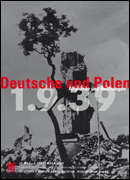


Exhibition | Oppression and Self-assertion | War and Occupation | Conflicts and Rapprochements
The Partitions of Poland
| Struggle for Freedom and Enthusiasm for Poland
Intensification of the "Germanization policy"
| World War One and the Reconstitution of Poland
Border Conflicts and Demonization
| A Calculated Rapprochement
Polish rebels once again took up arms against their Russian occupiers in early 1863. In order to solidify their relations, Prussia and Russia signed the "Alvensleben Convention," in which they agreed to coordinate their actions with respect to the rebellious Poles. With Prussian support, the Russian army crushed the Polish revolt in April 1864.
Bismarck continued Prussia's anti-Polish policies as Chancellor of the German Empire, which was formed in 1871, believing that an independent Poland constituted a threat to the young German nation-state. In eastern Germany, Bismarck's Kulturkampf (cultural war) against the Catholic Church took on a deliberately anti-Polish tone. The principal goal of the "Germanization" policy was to suppress Poland's national and cultural identity and limit the rights of Germany's Polish minority. The Poles responded with cohesion, defiance and resistance.
